Why Smart Manufacturers Choose Trumpf TRU LASER Retrofit
Upgrading a laser cutting system can seem overwhelming. Complete replacements are costly and disruptive to production. Many manufacturers now opt for Trumpf TRU LASER retrofit solutions, a smarter modernization strategy. This approach significantly improves laser cutting capabilities without the major investment and downtime of new equipment. Let's explore why this trend is gaining traction and how it could benefit your business.
Preserving Your Investment While Boosting Performance
A primary advantage of retrofitting is preserving your current equipment investment. Rather than discarding a functional machine, a Trumpf TRU LASER retrofit upgrades core components, revitalizing your existing system. This results in considerable cost savings compared to a full replacement. Furthermore, retrofitting minimizes production downtime, allowing you to maintain output and satisfy customer needs. This is especially vital in industries with tight deadlines and demanding production schedules.
Economic Advantages: Short-Term Savings and Long-Term Gains
The financial benefits extend beyond initial cost savings. Retrofitting often improves operational efficiency, leading to lower operating costs and higher profitability. Trumpf TRU LASER retrofit solutions have significantly impacted manufacturing efficiency and sustainability across various sectors. For instance, upgrading older CO2 laser cutting machines to fiber lasers can boost production speed by up to 40% while reducing energy consumption by roughly 30%. Companies making this change report annual electricity cost savings between €10,000 and €18,000, depending on their operational scale. Learn more: Trumpf Laser Retrofit from CO2 to Fiber. These long-term benefits create a strong return on investment (ROI) and position your company for continued success. For further insights, consider: Laser Podcast sitemap.
Ideal Retrofit Candidates: Identifying the Right Systems
Not all laser cutting systems are suitable for retrofitting. Factors such as machine age, overall condition, and production needs influence the feasibility and effectiveness. Older CO2 laser systems are excellent candidates for upgrading to fiber laser technology, providing significant performance gains.
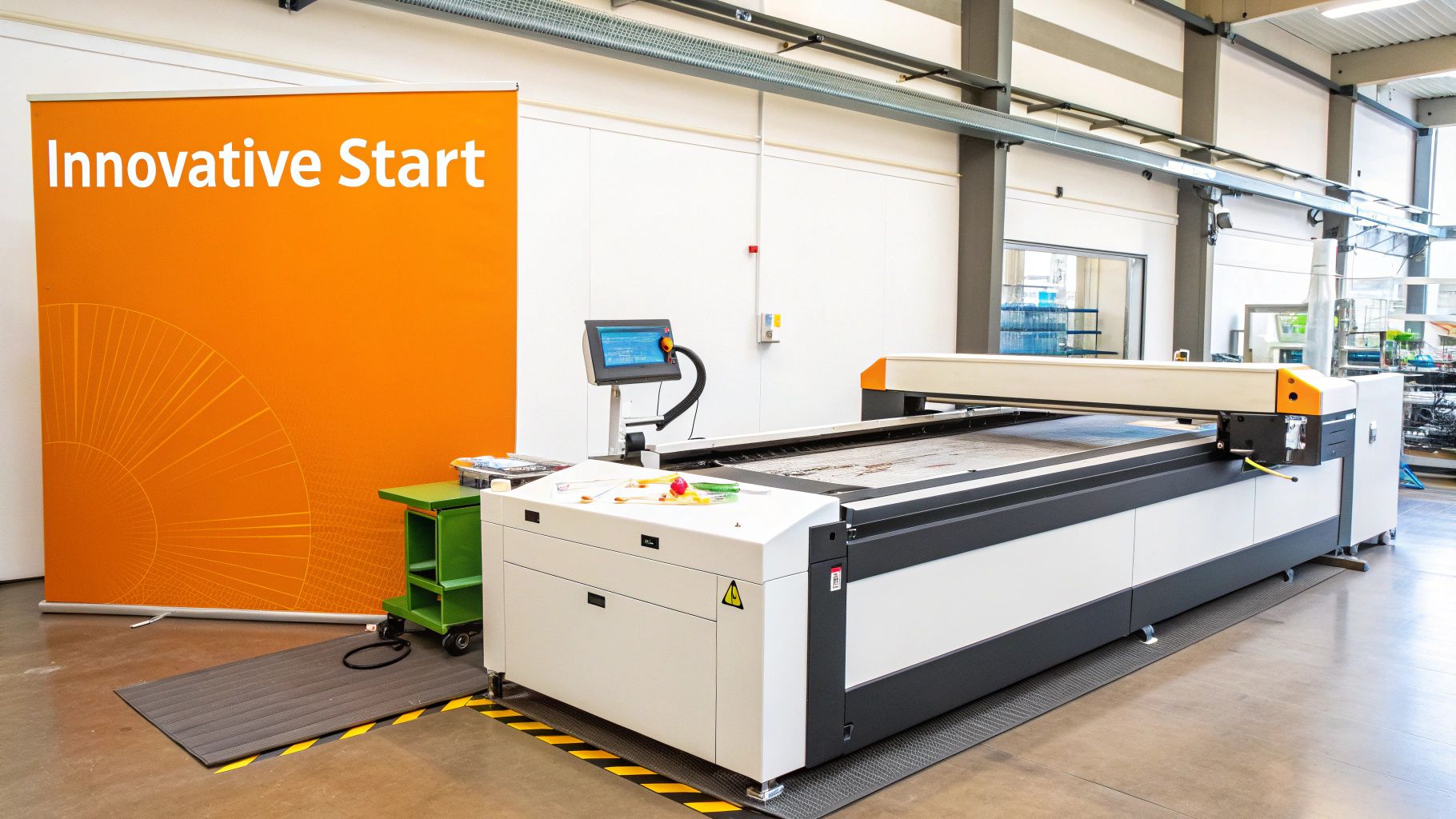
Making the Smart Choice for Your Business
Choosing a Trumpf TRU LASER retrofit is a strategic investment. This approach offers immediate cost advantages and positions businesses for long-term growth and competitiveness. Retrofitting allows companies to adopt modern laser cutting technologies while minimizing disruptions and maximizing the value of their current equipment. This proactive strategy allows manufacturers to enhance operations, improve profits, and stay competitive in a dynamic industrial environment.
CO2 to Fiber: The Game-Changing Transformation
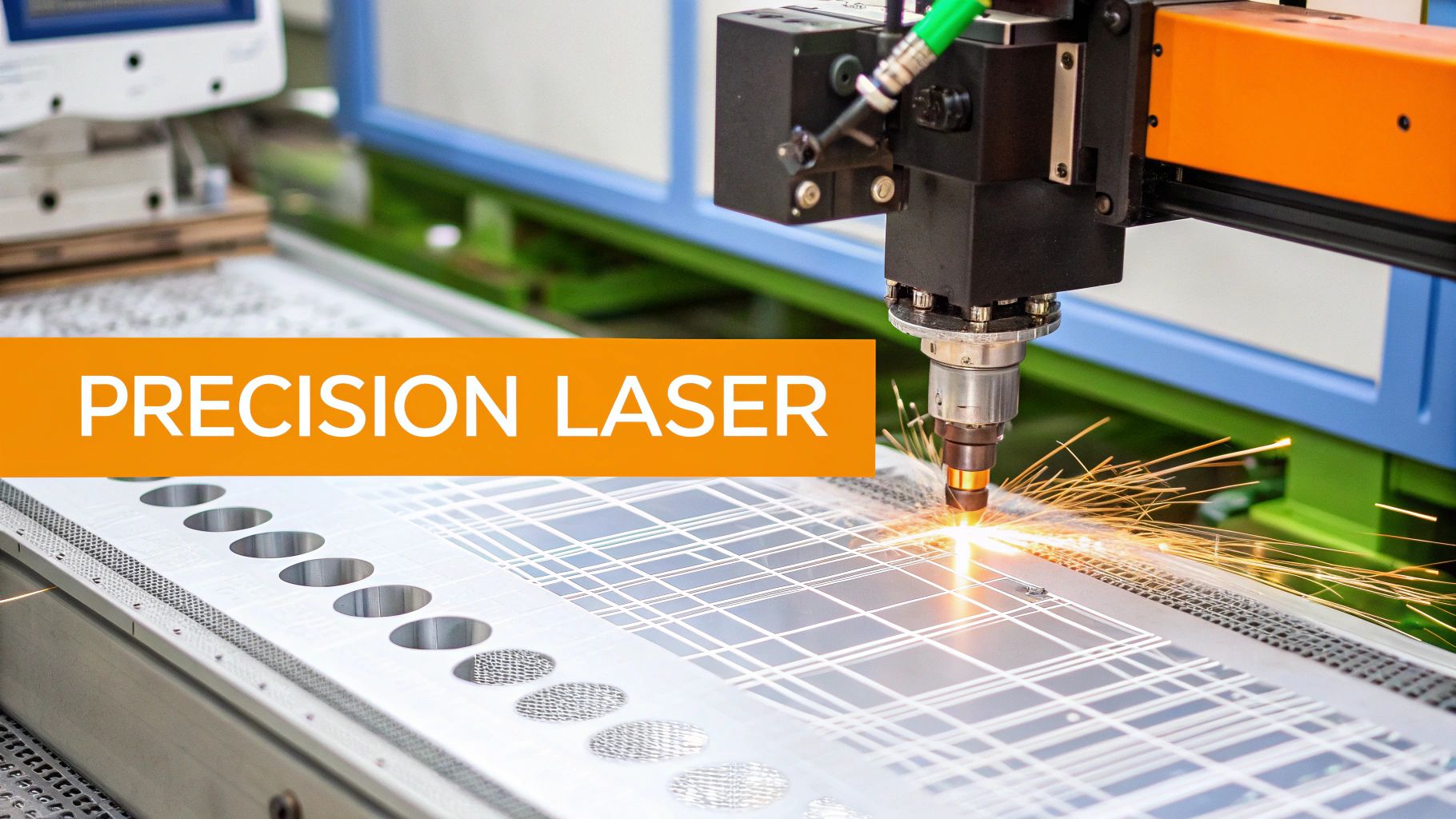
Retrofitting your Trumpf TRU LASER from CO2 to fiber laser technology represents a significant upgrade. This change impacts how the laser interacts with materials, leading to substantial performance improvements. This section explores the core technological differences and the potential this upgrade offers.
Wavelength and Beam Quality: The Foundation of Improvement
The most fundamental change is the wavelength. CO2 lasers operate at 10.6 micrometers, while fiber lasers operate around 1 micrometer. This shorter wavelength makes fiber lasers significantly more efficient at processing many metals.
Fiber lasers are readily absorbed by metals, leading to faster cutting speeds. They can easily process highly reflective materials, such as copper and brass, which posed a challenge for CO2 laser systems.
Beyond wavelength, fiber lasers also offer superior beam quality. This means a more focused and intense beam, leading to cleaner cuts, smaller heat-affected zones, and better detail.
Material Interaction and Processing Capabilities
The differences in wavelength and beam quality change how the laser interacts with materials. The focused energy density of a fiber laser results in quicker cutting speeds and significantly improved edge quality.
For instance, a fiber laser cuts thin sheet metal much faster, increasing throughput and productivity. The higher energy density also allows processing thicker materials that a CO2 laser couldn't handle, expanding your production capabilities.
Components: What Gets Replaced and What Stays
A Trumpf TRU LASER retrofit isn't a full system replacement. You retain much of your existing equipment, maximizing your initial investment. Primarily, the CO2 laser source is replaced with a fiber laser source.
The beam delivery system and cutting head also get upgraded. Often, the motion system, machine frame, and core structure remain the same. This minimizes disruption and complexity.
However, the cooling system may require changes to handle the different thermal properties of the fiber laser. The control software also needs updating to manage the new laser source and its features.
To understand the key differences and benefits of retrofitting, refer to the table below:
CO2 vs. Fiber Laser Technology Comparison: Key differences between CO2 and fiber laser technologies and benefits gained through retrofitting
| Feature | CO2 Laser System | Fiber Laser System | Improvement with Retrofit |
|---|---|---|---|
| Wavelength | 10.6 micrometers | ~1 micrometer | Increased absorption by metals |
| Beam Quality | Lower | Higher | Cleaner cuts, reduced HAZ |
| Cutting Speed | Slower | Faster | Higher throughput |
| Material Thickness Capacity | Limited | Increased | Can process thicker materials |
| Processing Reflective Materials | Difficult | Easier | Expands processing capabilities |
| Energy Efficiency | Lower | Higher | Reduced operating costs |
This table highlights the core advantages of switching to fiber laser technology: improved material interaction, increased speed and efficiency, and expanded processing capabilities.
Power Requirements and Efficiency Gains
Fiber lasers are remarkably efficient. They use less power for the same cutting performance as a CO2 laser, reducing operating costs. Their ability to process reflective materials without special coatings or workarounds further increases efficiency.
This results in substantial savings on materials and consumables. The improved efficiency also reduces your environmental footprint, supporting sustainable manufacturing.
Real-World Examples: Transforming Manufacturing
Many industries have adopted Trumpf TRU LASER retrofits. The automotive industry uses fiber laser cutting for the speed and precision required for complex parts. The electronics industry benefits from fiber lasers' ability to process delicate components with minimal heat.
The increased speed, ability to process new materials, and higher cutting precision have expanded manufacturers' product offerings. These real-world examples show how a Trumpf TRU LASER retrofit can reshape manufacturing.
The Real ROI of Trumpf TRU LASER Retrofit Investment
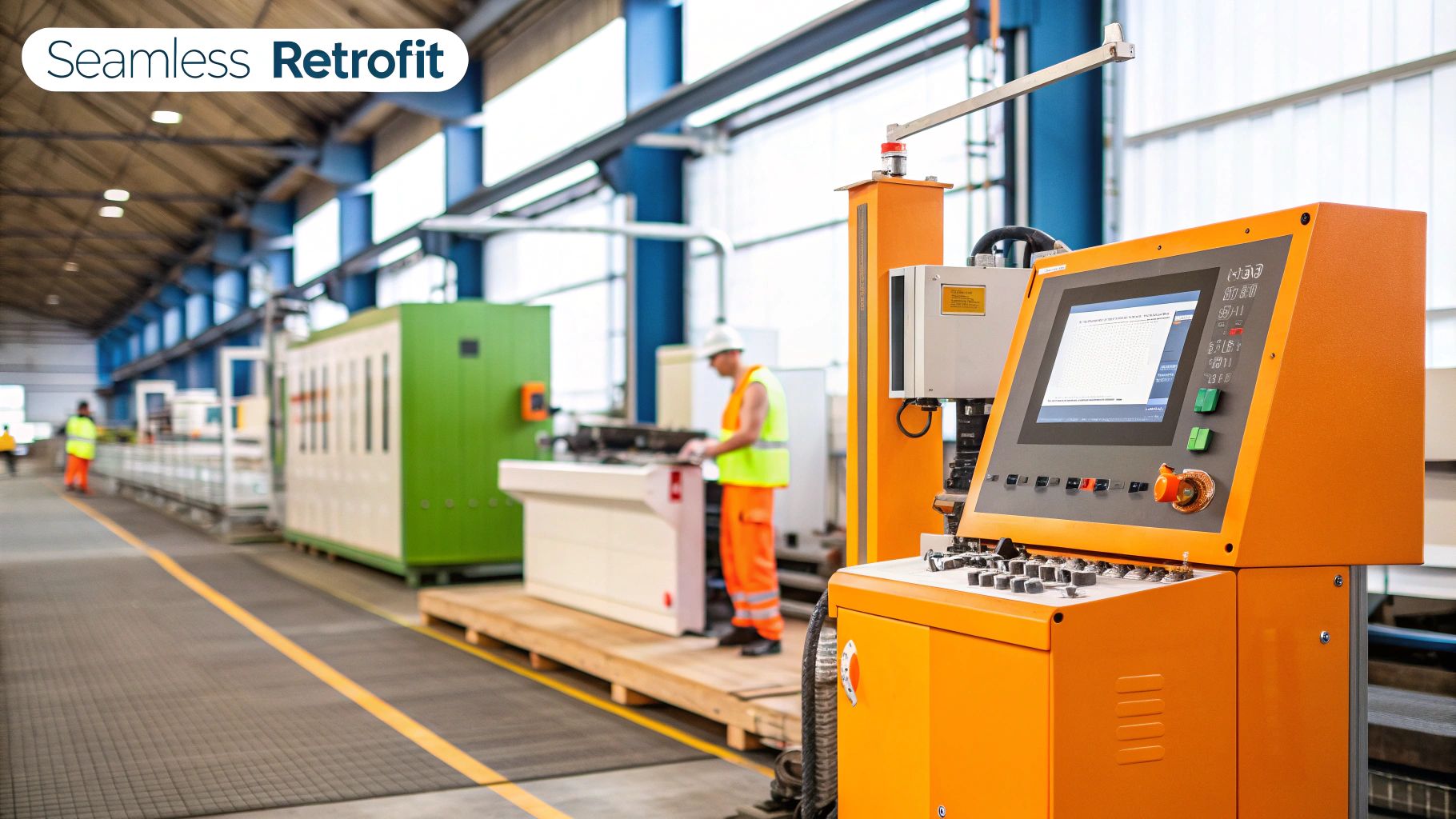
Calculating the return on investment (ROI) for a Trumpf TRU LASER retrofit requires careful consideration of both costs and benefits. While a retrofit is generally less expensive than buying a brand new system, understanding the long-term financial implications is essential for making an informed decision. It’s about looking at the bigger picture, not just the initial price.
Calculating the Total Cost of Ownership
A thorough cost analysis includes the price of the retrofit itself, along with any additional expenses like cooling system upgrades, required software updates, and essential operator training. However, these initial costs are often balanced by significant long-term savings. Lower energy consumption, reduced maintenance costs, and improved throughput all contribute to a lower total cost of ownership compared to maintaining or fully replacing an aging system. Minimized downtime during the retrofit process is another key advantage over a complete system overhaul.
Payback Periods and Opportunity Costs
The payback period, the time it takes for the ROI to equal the initial investment, is a crucial metric. This involves comparing the retrofit cost with the anticipated savings from increased efficiency, reduced material waste, and lower maintenance expenses. You should also evaluate opportunity costs, meaning the potential gains you might miss by not choosing alternative modernization strategies. Purchasing a new machine offers the latest technology, but the significantly higher upfront investment and extended downtime could impact short-term profitability.
Case Studies: Real-World ROI Examples
Real-world examples offer valuable insights into the financial benefits of retrofitting. For instance, manufacturers in the automotive industry have documented substantial ROI after retrofitting their Trumpf laser cutters. These gains often come from faster cutting speeds, resulting in higher production output with less wasted material. Similarly, electronics manufacturers have seen improvements by processing intricate components with greater precision and less heat, leading to better product quality and lower scrap rates. Trumpf's financial success within its laser technology segment has been remarkable. In the 2022/23 fiscal year, the company achieved a total revenue of €5.4 billion, a 27% increase compared to the previous year. Laser technology revenue reached €2.1 billion, a year-over-year growth of 28%. Trumpf's innovative retrofitting solutions have played a significant role in this growth as manufacturers seek less disruptive and more cost-effective ways to modernize. For more in-depth information, see the Trumpf Laser Systems Brochure. You might also find the Laser Podcast Sitemap helpful.
Evaluating Retrofit for Your Needs
The decision to retrofit ultimately depends on your individual situation. Factors such as the age of your current machinery, your production needs, and your future business goals all play a role in determining whether a Trumpf TRU LASER retrofit aligns with your financial objectives. A thorough assessment will reveal if the improved efficiency, expanded material processing options, and lower operational costs outweigh the investment. This careful evaluation allows you to make a strategic decision that positions your business for lasting success.
From Decision to Production: Your Retrofit Journey
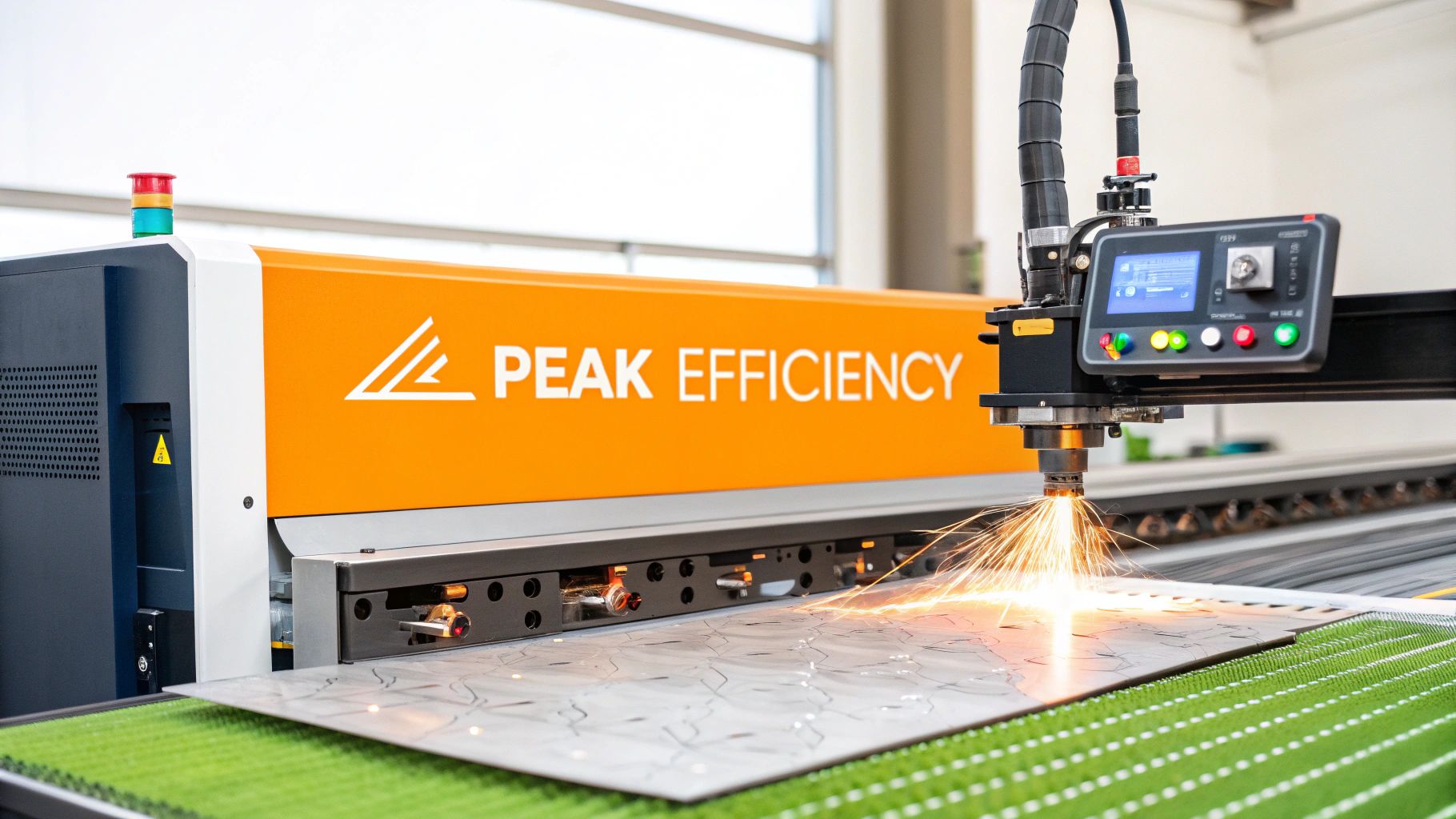
So, you've decided a Trumpf TRU LASER retrofit is the best path forward for your business. What's next? This section outlines the typical process, from the first evaluation to getting your production line back up and running. We'll explore each stage, address common challenges, and provide solutions for a smooth transition.
Initial Assessment and Planning: Laying the Groundwork
The first step in any successful retrofit is a thorough evaluation of your current Trumpf laser cutting system. This involves examining the machine's overall condition, pinpointing components that need an upgrade, and understanding your production requirements. This assessment helps define the project's scope and create a realistic timeline. A well-defined plan helps minimize potential downtime and keeps the project on schedule.
The Installation Process: Speed and Efficiency
After careful planning, the physical installation of the Trumpf TRU LASER retrofit can begin. This typically includes replacing the CO2 laser source with a fiber laser source, upgrading the beam delivery system and cutting head, and updating both the cooling system and control software. One of the key advantages of choosing Trumpf's solutions is the speed of installation and the minimal impact on operations.
The retrofit process generally takes only 2 to 3 days. Many businesses report minimal interruption to their production schedules. This rapid turnaround is especially valuable in industries with tight deadlines where delays can be costly. Unlike new machine purchases, which often necessitate extensive operator training, the retrofit process allows your current team to continue working without significant retraining. For detailed statistics and information, check out Trumpf Laser Retrofits.
Resuming Production: Getting Back Online
Once the installation is finished, the focus shifts to getting back to work. This involves testing the upgraded system, calibrating it for optimal performance, and seamlessly reintegrating it into your existing workflow. Because the majority of your original system remains unchanged, the transition is typically smooth, requiring only minor adjustments from your team.
Training and Adaptation: Empowering Your Team
While extensive retraining isn't usually necessary, some adjustments are needed for operators to fully master the new fiber laser technology. Trumpf provides comprehensive support and resources to ease this transition, ensuring your team quickly harnesses the full power of the upgraded system. This focused training approach maximizes the return on your Trumpf TRU LASER retrofit investment. Benefits include increased cutting speeds, improved precision, and the ability to process a wider range of materials.
Planning Checklist and Decision Framework: Ensuring a Smooth Transition
For a successful Trumpf TRU LASER retrofit, consider the following checklist:
- Assessment: Conduct a complete evaluation of your current equipment and its capabilities.
- Planning: Create a detailed plan outlining the scope of the retrofit and establish a realistic timeline.
- Coordination: Maintain clear communication with Trumpf representatives and your internal team throughout the entire process.
- Preparation: Ensure your facility is properly prepared for the installation process.
- Testing: Thoroughly test the retrofitted system before resuming full production.
By adhering to these steps, you can minimize downtime, maximize the benefits of your investment, and quickly reach your production targets. This proactive approach helps guarantee a seamless transition so you can enjoy the increased speed, precision, and overall efficiency of your upgraded Trumpf laser cutting system.
Future-Proofing Through Trumpf TRU Laser Retrofit
A Trumpf TRU Laser retrofit offers more than a simple upgrade to your current machinery. It strategically positions your business for the evolving future of manufacturing. This involves adapting to wider industry trends and meeting increasing demands for sustainable practices. Your retrofitted equipment won't just be faster and more efficient; it will be prepared for an interconnected and environmentally conscious manufacturing landscape.
Integrating With Industry 4.0 Initiatives
Modern manufacturing thrives on data. A Trumpf TRU Laser retrofit empowers older systems to participate in this data-driven environment. Retrofitted machines connect seamlessly with production monitoring platforms and data analytics tools. This integration provides valuable insights, leading to better decision-making and optimized production processes.
These retrofits also facilitate predictive maintenance. By analyzing machine data, potential problems can be identified and resolved before they lead to costly downtime. This proactive approach minimizes disruptions and maximizes the lifespan of your equipment.
For example, imagine a sensor on the retrofitted laser detecting unusual vibrations. The system could automatically alert maintenance personnel and even schedule preventative maintenance before a significant breakdown occurs. This foresight prevents expensive repairs and keeps production on track.
Meeting Sustainability Requirements
Sustainability is now a core business imperative. Modernizing your equipment with a Trumpf TRU Laser retrofit drastically reduces your environmental footprint compared to a full system replacement. This aligns with stricter environmental regulations and growing customer expectations for eco-friendly manufacturing.
Retrofitting also consumes fewer resources and generates less waste than manufacturing a new machine. This conservation-focused approach preserves valuable materials and minimizes your company's environmental impact. Sustainability and resource efficiency are key components of the Trumpf TRU Laser retrofit strategy. The OPC UA Retrofit Cube, for instance, connects legacy machines to modern data exchange standards. This enhances connectivity and enables smarter manufacturing. This is particularly important given the interconnected nature of modern manufacturing, where IoT technologies allow for real-time monitoring and predictive maintenance. Learn more: Extending Machine Life.
Gaining a Competitive Edge
Forward-thinking manufacturers use retrofitted equipment to expand into new markets and attract environmentally conscious customers. By demonstrating their commitment to sustainable practices, they strengthen their reputation and open up new business opportunities.
This proactive approach positions your company as an industry leader, highlighting a dedication to responsible manufacturing. For more insights, see: Laser Podcast Sitemap. This strategic move not only enhances operational efficiency but also establishes a strong foundation for future growth.
Real-World Performance Gains After Trumpf TRU LASER Retrofit
A Trumpf TRU LASER retrofit promises enhanced performance, but what tangible results can you realistically expect? This section examines verified performance data from manufacturers in various industries who have already completed the retrofit. We'll look at specific, measured improvements and hear directly from production managers regarding their experiences.
Quantifiable Improvements: Speed, Quality, and Efficiency
One of the most significant advantages of a fiber laser retrofit is a dramatic increase in cutting speed. Depending on the material and thickness, some manufacturers have reported increases of up to 40% or more. This faster processing directly translates to higher throughput and improved productivity.
Along with speed, edge quality also sees a marked improvement. The precise, focused beam of a fiber laser creates cleaner cuts with a smaller heat-affected zone (HAZ). This minimizes or eliminates the need for secondary processing, saving both time and resources. The enhanced beam quality also allows for more intricate and complex cuts, broadening design possibilities and product offerings.
Energy efficiency gains are another key benefit. Fiber lasers use significantly less energy than their CO2 counterparts, lowering operating costs and reducing environmental impact. Some manufacturers have documented energy consumption decreases of as much as 30% after the retrofit.
The following table shows data collected from several manufacturers who upgraded their Trumpf systems. It illustrates the improvements achieved across key metrics.
Retrofitted Trumpf System Performance Metrics Measured improvements in key performance areas after TRU LASER retrofit completion
| Performance Metric | Before Retrofit | After Retrofit | Percentage Improvement | Industry Average |
|---|---|---|---|---|
| Cutting Speed (Mild Steel, 1mm) | 50 in/min | 75 in/min | 50% | 30-40% |
| Edge Quality (Roughness Average, Ra) | 10 µm | 5 µm | 50% | 20-30% |
| Energy Consumption (kWh/hour) | 20 kWh | 14 kWh | 30% | 20-25% |
| Material Thickness Capacity (Mild Steel) | 0.5 in | 0.75 in | 50% | 25-30% |
As shown in the table, the improvements gained from the TRU LASER retrofit significantly exceed the industry average in several key areas. This data underscores the potential for substantial performance enhancement after implementing the upgrade.
Material Capabilities: Expanding Your Options
The Trumpf TRU LASER retrofit expands the range of materials you can process, including highly reflective metals such as copper and brass, which pose challenges for CO2 lasers. This presents new opportunities for product development and diversification into new markets.
For instance, one electronics component manufacturer can now process copper circuit boards with the retrofitted system, a task impossible with their older CO2 laser. This new capability allowed them to bring production in-house, reducing both lead times and costs.
Direct Feedback From Production Managers
Production managers who have implemented the retrofit offer valuable perspectives. Many cite the unanticipated benefit of improved operator morale. The enhanced speed and precision of the new system simplify and streamline their work, leading to higher job satisfaction.
Some managers also noted the initial learning curve associated with the new software and controls. While training is available, adapting to the updated system requires time. Careful planning and communication with your team are vital for addressing these challenges.
Specific Application Benefits
Specific applications greatly benefit from the retrofit. Manufacturers in fine cutting applications, such as medical device production, see considerable improvements in precision and detail with the fiber laser’s focused beam. Those in high-volume production settings, like automotive part manufacturing, gain significant advantages from the higher cutting speeds and shorter processing times.
By evaluating these real-world performance gains and considering the experiences of other manufacturers, you can determine whether a Trumpf TRU LASER retrofit is the right choice for your business needs and performance goals.
Is Trumpf TRU Laser Retrofit Right for Your Operation?
Deciding on a Trumpf TRU LASER retrofit requires careful consideration of your current setup and future ambitions. This guide offers a practical framework to evaluate the potential upsides and downsides of retrofitting your existing equipment.
Evaluating Your Current Equipment and Production Needs
Start by assessing your current laser cutting system. How old is it? What limitations are you facing? Are slow cutting speeds, inconsistent edge quality, or material restrictions holding you back? These are common signs that a retrofit might be beneficial. Modernizing your laser can drastically improve operational efficiency, much like the strategies discussed in this article on improving operational efficiency.
Next, consider your production demands. What throughput do you need now, and what will you need in the future? A Trumpf TRU LASER retrofit can substantially increase productivity, enabling you to meet growing demand without purchasing a completely new system. Think about the materials you work with, too. A fiber laser retrofit might be worthwhile if you process reflective metals or need higher precision cuts.
Business Goals and Operational Priorities
Your business objectives are crucial to this decision. Are you focused on reducing operating costs? Improving product quality? Expanding your capabilities? A retrofit can contribute to these goals. However, balance these benefits against the potential disruption during the retrofit process. Though usually brief, any downtime should factor into your decision.
Asking the Right Questions
Before committing to a Trumpf TRU LASER retrofit, ask yourself these essential questions:
- What are the biggest problems with my current laser cutting system?
- Will a retrofit solve these problems effectively?
- What improvements can I expect in speed, quality, and efficiency?
- How will the retrofit affect my production schedule?
- What's my budget, and what's the expected return on investment (ROI)?
Honest answers will clarify whether a retrofit aligns with your operational and financial goals.
Learning From Others: Manufacturing Success Stories
Many manufacturers have already faced the retrofit decision. Some realized they needed an upgrade when aging equipment couldn't keep up with demand, or when maintenance costs spiraled. Others pursued a retrofit to broaden their material processing capabilities. Their experiences offer valuable lessons.
For example, one manufacturer opted for a retrofit after losing a contract because their equipment couldn't handle a specific material. Another chose to retrofit when maintaining their older CO2 laser became more expensive than upgrading.
Evaluating Your Options: A Practical Checklist and Action Plan
- Evaluate: Assess your current equipment, production needs, and business goals.
- Research: Explore Trumpf TRU LASER retrofit options and compare them to other modernization solutions.
- Consult: Talk to Trumpf representatives and other manufacturers who have completed retrofits.
- Analyze: Calculate the projected ROI and payback period.
- Plan: Create a detailed implementation plan to minimize production disruption.
Following these steps will help you make an informed decision about whether a Trumpf TRU LASER retrofit is the right strategic move for your business.
Ready to explore the possibilities of a Trumpf TRU LASER retrofit? Visit Laser Insights China to learn more about the latest laser technologies and innovations. Connect with experts, access helpful resources, and discover how a retrofit could benefit your business.
